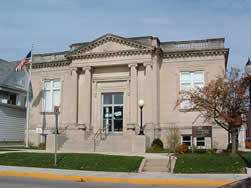Coronaviruses are a large family of viruses that are common in people and many different species of animals. Rarely, animal coronaviruses can infect people and then spread between people such as with MERS-CoV, SARS-CoV, and now with this new virus (named SARS-CoV-2). Initially, many of the patients at the epicenter of the outbreak in Wuhan, Hubei Province, China had some link to a large seafood and live animal market, suggesting animal-to-person spread. Later, a growing number of patients reportedly did not have exposure to animal markets, indicating person-to-person spread. Person-to-person spread was subsequently reported outside Hubei and in countries outside China, including in the United States.
The most commonly reported symptoms included fever, dry cough, and shortness of breath, and most patients (80%) experienced mild illness. Early reports suggest that illness severity is associated with age (>60 years old) and pre-existing disease.
Based on what is currently known about the spread from Person-to-person and not Community based spread. his type of transmission occurs via respiratory droplets most frequently among close contacts* (within about 6 feet).
*CDC defines “close contact” as being about six (6) feet (approximately two (2) meters) from an infected person or within the room or care area of an infected patient for a prolonged period while not wearing recommended PPE. Close contact also includes instances where there is direct contact with infectious secretions while not wearing recommended PPE.
Close contact generally does not include brief interactions, such as walking past a person.
Protect yourself and your community from COVID-19
3 Ways of Protection and preventing virus spread:
- Personal Protection – It’s Simple Wash your hands frequently with soap and water for at least 20 seconds, especially after going to the bathroom, before eating, and after blowing your nose, coughing or sneezing. If soap and water are not available, use an alcohol-based hand sanitizer with at least 60% alcohol. Avoid close contact with people who are sick and stay home when you are sick.
- Social Distancing – For most people, the immediate risk of being exposed to the virus that causes COVID-19 is thought to be low. Understand the virus and conduct a self risk assessment as to whether to attend mass gathering events. If Community Spread of the virus occurs and risk levels elevate, local decisions will be made as to postponing or temporarily suspending large gathering events.
- Environmental protections – Increase your efforts to clean and sanitize “high touch” point surfaces with an EPA approved product, wear disposable gloves as extra layer of protection during cleaning activities and wash hands afterwards.
Disinfecting Surfaces
Do not Panic! Coronaviruses are enveloped viruses, meaning they are one of the easiest types of viruses to kill with the appropriate disinfectant product. Consumers using these disinfectants on an enveloped emerging virus should follow the directions for use on the product’s master label, paying close attention to the contact time for the product on the treated surface (i.e., how long the disinfectant should remain on the surface).
Transmission of novel coronavirus to persons from surfaces contaminated with the virus has not been documented. Current evidence suggests that novel coronavirus may remain viable on surfaces made from a variety of materials. Cleaning of visibly dirty surfaces followed by disinfection is a best practice measure for prevention of COVID-19 and other viral respiratory illnesses in households and community settings. Source CDC, Preventing Spread in Communities
The EPA strongly recommends following the product label use directions for enveloped viruses, as indicated by the approved emerging viral pathogen claim on the master label. If the directions for use for viruses/virucidal activity list different contact times or dilutions, use the longest contact time or most concentrated solution. www.EPA.gov
List N: Disinfectants for Use Against SARS-CoV-2 (PDF)(7 pp, 210 K, March 3, 2020)
- Clean all “high-touch” surfaces for example, counters, tabletops, doorknobs, light switches, bathroom fixtures, toilets, phones, keyboards, tablets, and bedside tables according to instructions described for the above EPA-registered product.
- Wear disposable gloves during cleaning activities.
- Based on CDC’s recommendations for Cruise ship cleaning, it is reasonable to apply a time period before entering the sick person’s room without respiratory protection, restrict access for at least two hours after the sick person has left the room.
- Persons on isolation protocols can assist with self cleaning by being provided them with sanitizing products.
- When cleaning is completed, collect soiled textiles and linens can be laundered using conventional processes following your standard procedures.
- PPE should be removed and placed with other disposable items in sturdy, leak-proof (plastic) bags that are tied shut and not reopened.
- No additional cleaning is needed for the supply-and-return ventilation registers or filtration systems. Source CDC cruise ship recommendations.
Food Safety
USDA is monitoring the situation closely in collaboration with our federal and state partners. FNS is ready to assist in the government-wide effort to ensure all Americans have access to food in times of need. In the event of an emergency or disaster situation, Food and Nutrition Service programs are just one part of a much larger government-wide coordinated response.
The USDA is not aware of any reports at this time of human illnesses that suggest COVID-19 can be transmitted by food or food packaging. However, it is always important to follow good hygiene practices (i.e., wash hands and surfaces often, separate raw meat from other foods, cook to the right temperature, and refrigerate foods promptly) when handling or preparing foods. www.USDA.gov
The Wells County Health Department continues to monitor the current situation with COVID-19 and has begun to take numerous actions to prepare the community and mitigate the impact of the virus. Some of the actions include:
- Updated Communicable Disease Plan to include COVID-19
- Creating weekly situational awareness briefings for healthcare partners
- Creating bi-weekly situational awareness briefings for elected officials, public safety agencies, schools, and select organizations
- Implementing Non-Pharmaceutical Interventions
- Reviewing Continuity of Operations measures with Wells County Emergency Management to ensure county government will remain open and continue to provide services
- Developing educational material for constituents
This situation is developing rapidly, the health department will continue update and improve plans, policies, and procedures, as well as action items to ensure every effort is made to safeguard the community.
For Individuals
There is currently no vaccine to prevent coronavirus disease 2019 (COVID-19). The best way to prevent illness is to avoid being exposed to this virus. However, as a reminder, CDC always recommends everyday preventive actions to help prevent the spread of respiratory diseases, including:
- Avoid close contact with people who are sick.
- Avoid touching your eyes, nose, and mouth.
- Stay home when you are sick.
- Cover your cough or sneeze with a tissue, then throw the tissue in the trash.
- Clean and disinfect frequently touched objects and surfaces using a regular household cleaning spray or wipe.
- Follow CDC’s recommendations for using a face mask.
CDC does recommend that people wear a face mask to protect themselves from respiratory diseases, including COVID-19. Click here for more information.
Face masks should also be used by people who show symptoms of COVID-19 to help prevent the spread of the disease to others. The use of face masks is also crucial for health workers and people who are taking care of someone in close settings (at home or in a health care facility).
Wash your hands often with soap and water for at least 20 seconds, especially after going to the bathroom; before eating; and after blowing your nose, coughing, or sneezing.
If soap and water are not readily available, use an alcohol-based hand sanitizer with at least 60% alcohol. Always wash hands with soap and water if hands are visibly dirty.
For information about hand washing, see CDC’s Hand Washing website
For information specific to healthcare, see CDC’s Hand Hygiene in Healthcare Settings
These are everyday habits that can help prevent the spread of several viruses. CDC does have specific guidance for travelers.
For Healthcare Providers
CDC’s website for Healthcare Providers.
For Long-Term Healthcare Facilities
CDC’s website for Long-Term Healthcare Facilities
For Business
CDC’s website for Businesses
For Schools
CDC’s website for Schools
For Additional Information
Please call the ISDH Epidemiology Resource Center at 317-233-7125 or e-mail epiresource@isdh.in.gov if you have further questions or, if you experience symptoms such as fever, cough and shortness of breath and have a recent history of travel to China or contact with someone suspected of having COVID-19.
For information about safety and readiness during and after flooding situations, check the link below.
CDC Flood Facts
For more information regarding water, food, and general safety during emergency situations, please visit the Wells County Health Department Public Health Preparedness page.



